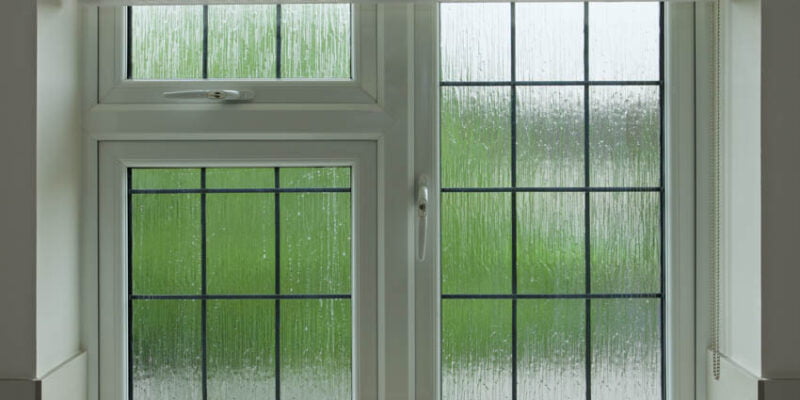Bathroom windows are often an afterthought when it comes to home design. But they don’t have to be! Adding a unique or obscure glass to your bathroom window can add both privacy and style. There are many different types of obscure glass to choose from, so you’re sure to find one that fits.
While doing our research, we have contacted many specialists in the industry like Ecoline Windows Vancouver, and now we are ready to share our recent insights and findings with you.
In this article, you will learn the types of obscure glass for bathroom windows, including what they are, levels of obscurity, its difference from frosted glass, and different options out there. Interested? Keep reading!
Why Is It Necessary to Know Your Glass options?
There are many types of glass for windows. In the end, the sort of glass you pick will have an impact not only on the aesthetics of your property but also on its level of seclusion and protection.
There are numerous types of glass, each with its own set of characteristics. The most frequent issue is the lack of privacy. Fortunately, there is a sort of glass that can help with that: obscure glass.
Below, we explore the many alternatives of obscure glass for bathroom windows as well as some of their practical advantages and applications. Continue reading to discover why they’re the ideal option for your home.
What Are Obscure Glass Windows?
Obscure glass is a type of window glass that has been treated to reduce the visibility through it. The level of obscurity can be adjusted by changing the treatment applied to the glass. The primary purpose of obscure glass is to provide privacy while still allowing light to enter the room. It is often used in bathrooms and bedrooms where privacy is important, but natural light is still desired.
Obscured glass may be frosted, patterned, or textured, with each type offering a unique degree of privacy. Some obscure glass completely masks the view on the other side of the window; others merely silhouette people and produce minor distortions.
Are there different levels of privacy when installing obscure glass?
Absolutely! An obscure glass window’s level of privacy can range from 1 to 5 — with level 1 being transparent and allowing some visibility and level 5 being completely opaque, providing complete seclusion. Depending on your design needs, you may select from these levels.
Difference Between Frosted Glass and Obscure Glass Explained
While both obscure and frosted glass reduces visibility, there are some key differences between the two.
- Frosted glass has a smooth, even surface that diffuses light. On the other hand, obscure glass can have patterns or textures that may distort or block light.
- Another significant difference is that frosted glass is usually see-through from one side only. So, if you’re looking for complete privacy, frosted glass isn’t the best option.
- Lastly, frosted glass is typically cheaper than obscure glass because it’s easier to produce.
What Are The Different Types of Obscure Glass?
Now that you understand the basics of obscure glass, it’s time to explore the different types. Here are four of the most common types of obscure glass:
1. Satin Etch
Satin etching is a type of acid etching that results in a smooth, even finish. The level of obscurity can be adjusted by changing the treatment applied to the glass. Satin etched glass has a high level of privacy and is perfect for bathrooms and bedrooms. It diffuses light evenly, providing a soft and relaxing glow.
2. Sandblasted glass
Sandblasting is a technique that uses air pressure to blast sand or other abrasive materials at high speed against a surface. This method can be used on both: flat and curved surfaces.
Sandblasted glass is perfect for areas where a high level of privacy is required. It has a smooth, even surface that obscures the view on the other side of the window. It also diffuses light evenly, providing a soft and relaxing glow.
3. Tinted glass
Tinting is one of the most frequent types of privacy glass for bathrooms. To make tinted glass darker, it is coated with a film, coating, or metal oxide. The amount of light transmitted through the glass is altered as a result of this.
You may still enjoy the view with this type of glass, but people outside won’t be able to see what’s inside your house.
The most significant advantage of tinted windows is their cost-effectiveness and energy efficiency. Aside from privacy and security, it also protects your home furniture from the sun’s rays, which is especially important for protecting your furnishings.
When it comes to window tinting, Sydney Tint Installation Solutions specializes in high-quality glass for window tinting, offering a wide range of options to meet your specific needs. With their expertise and cutting-edge technology, they provide top-notch tinting solutions that enhance privacy, reduce heat and glare, and protect against harmful UV rays.
4. Reflective glass
Reflective glass is a type of privacy glass because it has a reduced amount of visibility. It allows you to see what’s going on outside clearly, but not from the other side.
It’s made from high-quality glass that has been metalized, giving it a mirror-like finish. Aside from privacy, reflecting glass is also efficient in lowering solar heat.
The Bottom Line
Obscure glass is a great way to add privacy to your home while still allowing natural light in. It comes in a variety of types, each with its own unique benefits. When selecting the right type of obscure glass for your home, consider your needs and budget.
Satin etch, sandblasted, tinted, and reflective glass are all great options that will provide you with the privacy you desire. Just make sure to properly analyze your house design, exterior, privacy level, and budget to pick the best alternative from reliable window experts in Vancouver.













Comments